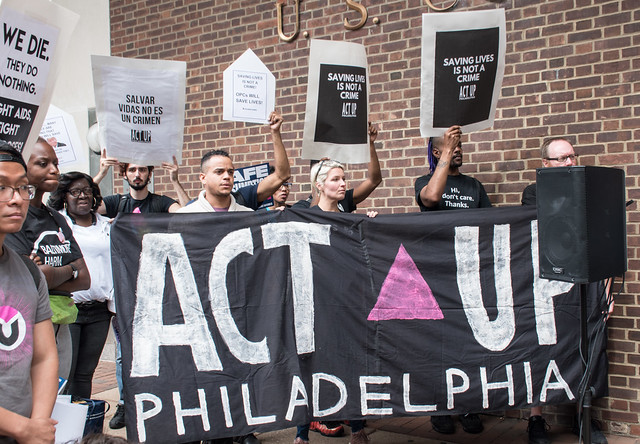

For decades, Philadelphia has been known as a heroin haven, with heroin of such high quality that people moved there for the sole purpose of having access to it. In recent years, the opioid epidemic ravaged the city while, over time, a particular section of the city, Kensington, became known as an open air market for heroin.
The quality of Kensington’s heroin decreased as illicit and experimental fentanyl analogues — such as acetylfentanyl, butyrfentanyl and carfentanil, which are dozens to thousands of times stronger than morphine — increased and the open air market for heroin became a site of overwhelming death.
Nevertheless, this hasn’t stopped people from swarming to Philadelphia seeking the most legendary of fixes. With that, it’s not a surprise that from sidewalks to buses, from convenience store bathrooms to the basements and bedrooms of their parents and partners, people are overdosing fatally and non-fatally in record numbers.
But Philadelphia isn’t alone. The city of Vancouver had its own open air drug market: the Downtown Eastside. With overdose deaths in Vancouver rising, Insite — the first supervised consumption site in North America — opened. The facility operates almost automatically: People come in with their drugs, they wait for their number to be called so they can go back to their booth, they set up and start using. If they seem to be overdosing, the staff bring out oxygen tanks and Narcan (naloxone), people stabilize, and they go on with their day.
It’s an easygoing process that allows the facility to get to know its patients. When they’re ready to finally quit using, they go to the connected facility called Onsite to get treatment.
Roadblock to Safehouse
This is one of the paths that the United States could take to deal with its opioid epidemic, and this is the path that the city of Philadelphia has chosen. It wishes to open Safehouse as a way to tackle its opioid epidemic, alongside increasing access to medicines like methadone, buprenorphine (Suboxone, Subutex, Sublocade, Bunavail, Zubsolv) and naltrexone (ReVia, Vivitrol). However, there are roadblocks along the way.
The first major one was a lawsuit against Safehouse filed by the U.S. Attorney for the Eastern District of Pennsylvania. The U.S. Attorney wants the court to declare Safehouse illegal under the Controlled Substances Act, which states that it is illegal to “manage or control any place, whether permanently or temporarily, either as an owner, lessee, agent, employee, occupant, or mortgagee, and knowingly and intentionally rent, lease, profit from, or make available for use, with or without compensation, the place for the purpose of unlawfully manufacturing, storing, distributing, or using a controlled substance.”
In response to the claim that Safehouse would violate the CSA, Safehouse shot back that the facility was unlike anything that the creators of the CSA and other related codes had in mind. It would not be a crack house nor a rave party. Instead it would be a critical medical facility that is unregulated by the CSA.
According to Safehouse’s response, the services it would provide are clean injection equipment, Narcan access, primary care, HIV and hepatitis C treatment, and wound care. It would also provide immediate access to drug treatment, such as methadone and buprenorphine. In their words, Safehouse would “bridge the short, but critical, gap — a matter of seconds to minutes — between the time a person receives a sterile syringe and other clean injection equipment and the need for immediate access to naloxone [Narcan] and other medical treatment to reverse an overdose.”
On Sept. 5 a court hearing was held to determine whether or not Safehouse, by existing, would violate the Controlled Substances Act. This hearing was intended to determine whether or not it was illegal to run a safe consumption site. The courtroom was packed with supporters and opponents of the facility. Outside, around 100 people met and rallied in support of the facility.
Mayor Jim Kenney, District Attorney Larry Krasner and Councilwoman Helen Gym were among the community leaders who spoke, followed by organizers from New York, Baltimore and Philadelphia. The Baltimore Harm Reduction Coalition, ACT UP Philadelphia, VOCAL-NY and other groups were present.
Samantha Kerr of the Baltimore Harm Reduction Coalition said, “We have as much right to live as the Sackler family, as the Trump family.” And she is right. The Safehouse facility, if it is allowed to open, will be the first of several facilities like it in the United States. The fate of all safe consumption sites in the U.S. is tied to the decision the judge makes — whenever that is.
At the Insite safe consumption facility, 1,466 overdose interventions took place in the previous year with zero overdose deaths. Without Insite, thousands of people could die. There would be no hope of recovery or survival beyond that point. The dead cannot recover.
Our lives — the lives of opioid users — matter. Imagine if Safehouse had been opened at the beginning of the opioid epidemic and not in the middle. Thousands of people would still be alive.
Raposo is a Portuguese Marxist analyst, editor of the web magazine jornalmudardevida.net, where this article…
By Alireza Salehi The following commentary first appeared on the Iranian-based Press TV at tinyurl.com/53hdhskk.…
This is Part Two of a series based on a talk given at a national…
Educators for Palestine released the following news release on July 19, 2025. Washington, D.C. Educators…
On July 17, a court in France ordered the release of Georges Abdallah, a Lebanese…
The following are highlights from a speech given by Yemen’s Ansarallah Commander Sayyed Abdul-Malik Badr…